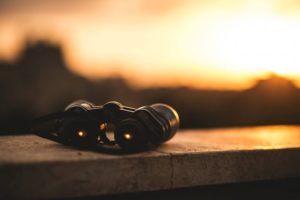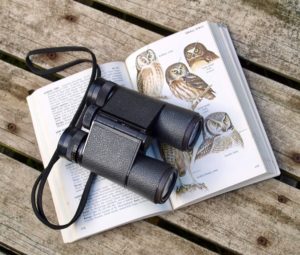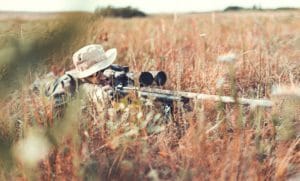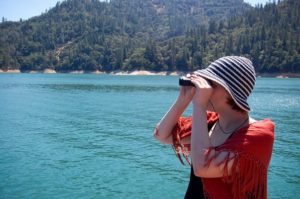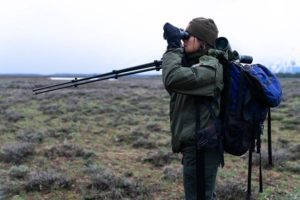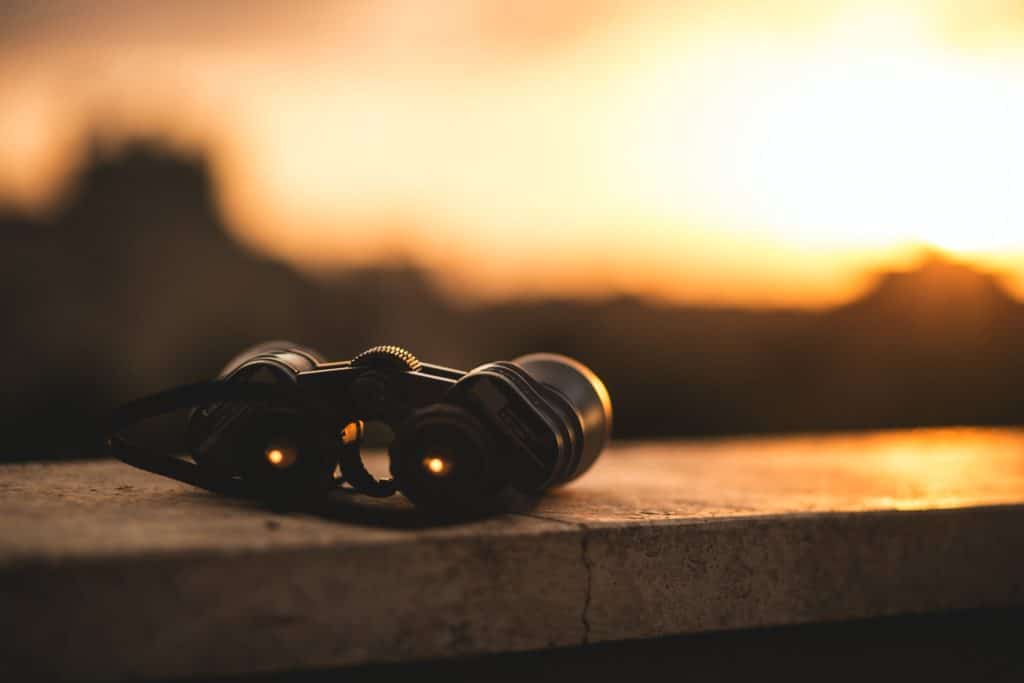As with cars, mobile phones and fashion, there’s no “ultimate” brand that creates the best binoculars. In the end, it’s up to your personal preferences and how you intend to use the product.
With that said, some well-renowned brands produce high-performing binoculars, and some manufacturers specialize in different types.
So, which should you go for?
In this article, we go through the best binoculars brands to see how their products compare and which brand is the best for what purpose.
The top brands of binoculars right now are:
- Luxury Zeiss and Leica brands.
- High-end Nikon, Steiner and Vortex.
- Great-value Bushnell and Leupold.
- Budget-friendly Barska, Night Hero and Tasco.
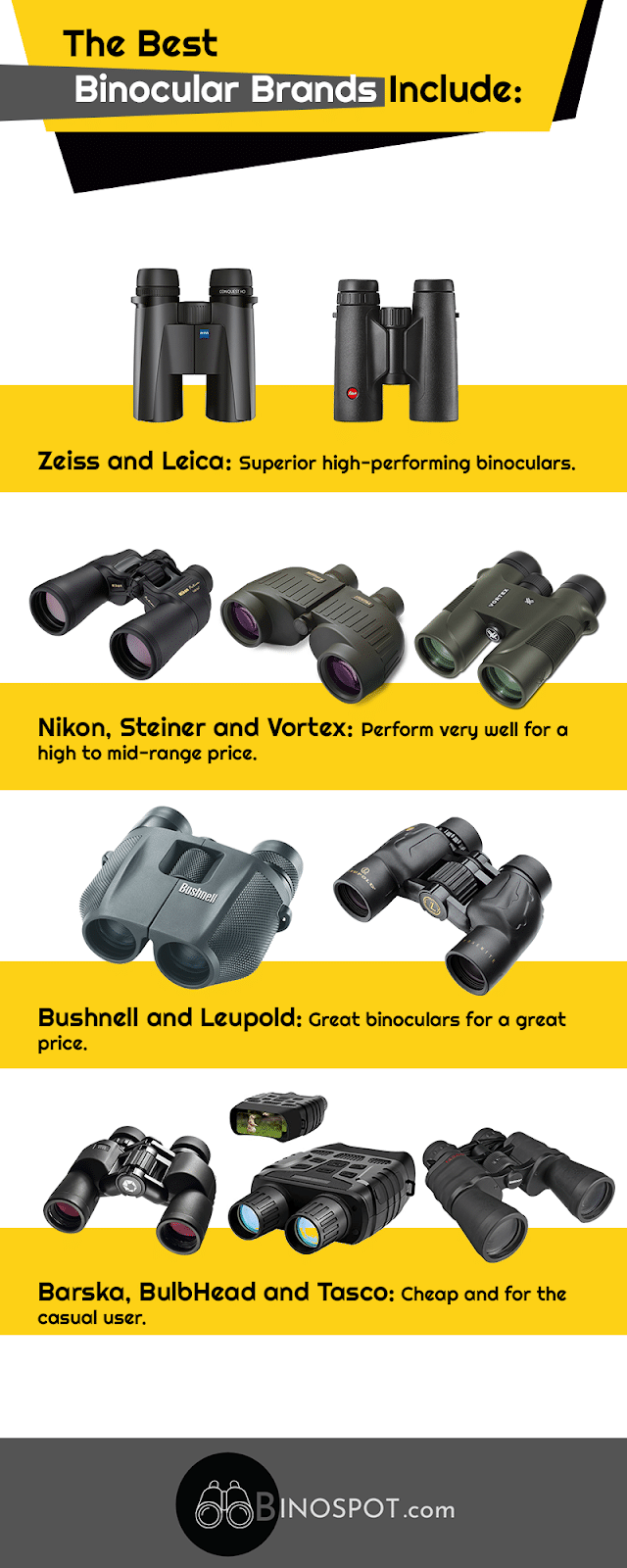
What Determines the Best Binoculars?
Before we get into the brand reviews, work your way through these core features so you know exactly what to look for to find the best binoculars for you.
Size
First things first, there are three main size categories when it comes to binoculars:
- Compact: Has an objective lens smaller than 30mm and is typically more lightweight and portable. Great for keeping in your backpack and suits hikers.
- Mid: Objective lens diameter is between 30-40mm. Brighter images than the compact ones and lighter than the full-sized ones. A good fit for bird watchers.
- Full: A lens that’s greater than 40mm. Heavy to hold for a long time but has superior magnification and durability. Good for still use, like hunting or long-range maritime needs.
Essentially, the larger the size, the larger the objective lens diameter, meaning that your binoculars can capture more light and, in turn, give you brighter images.
Magnification
Outdoor optics with high magnification are good for observing small objects further away. They’re the best binoculars for search and rescue or stargazing, for example.
However, very high magnification requires your hands to be very stable to maintain steady viewing. If you’re sitting still and using the binoculars, this might be okay. For someone who moves around and stays on their feet, it’s less ideal.
Which Is the Best Magnification for Binoculars?
A good trade-off between magnification, stable image and image quality for most users is an 8x or 10x zoom.
Are 10×42 Binoculars Better than 8×42?
So, what’s better 8x or 10x binoculars? This depends on what you’re observing. If you’re looking at small objects far away while mostly remaining still, the 10×42 binoculars would be better. This is the case for long-range hunters or bird watchers.
However, high magnification makes the image less steady if you’re moving, so the best binoculars for hikers and law enforcement, for example, would probably be an 8×42 model.
Field of View
Magnification affects your field of view (FOV) negatively. A higher zoom means a narrower field of view, and vice versa.
When you track moving objects, like birds or deer, you want to have a wide FOV. This way, you can keep watching the targets without moving much and are less likely to disturb them.
What determines your binoculars’ field of view is the width of the area you can view 1,000 yards away from you. The best binoculars have over 328 feet (100m) FOV.
Prism Configuration and Materials
There are two main prism configurations:
- Porro prism: This is the older style and typically makes the binoculars bulkier.
- Roof prism: Sleeker and more expensive, but the best binoculars use a roof prism. The configuration doesn’t affect image quality, only the binoculars’ size.
As for prism materials, you have two main options:
- BAK-4: This glass type gives you the clearest image and capability to spot details and colors to a greater extent. It’s used by the best binoculars.
- BK-7: Gives an average picture but is cheaper.
Exit Pupil
You calculate the exit pupil by dividing the objective lens’ diameter by the magnification.
To put it simply, a larger exit pupil gives brighter images because it allows for better viewing in low-light environments and makes it easier to keep the picture steady.
For low-light settings, such as dusk or dawn, go for a pair of binoculars with a 5mm exit pupil. If you mostly use the gadget during full daylight, a 2mm exit pupil should be enough to provide a bright image.
Eye Relief
You determine this by the distance between the binoculars’ lenses and your eyes.
People who wear glasses should take this into consideration, and the best binoculars for them will have an eye relief with at least 11mm.
In general, you can adjust the eye relief up to the maximum eye relief value, which is the stated spec.
Weatherproof Pair of Binoculars
For your binoculars to sustain dirty, muddy and wet environments, they really need to be waterproof. Note that waterproof binoculars tend to use moisture-sealing O-rings and can withstand rain and splashing but typically not full submersion.
Fog-proof models are great if you use them during dusk or dawn, or just in foggy weather in general. The best binoculars have nitrogen inside of them instead of air and don’t condense, which is why the internal lenses don’t fog up.
Protective rubber coatings are another plus to protect against bumps.
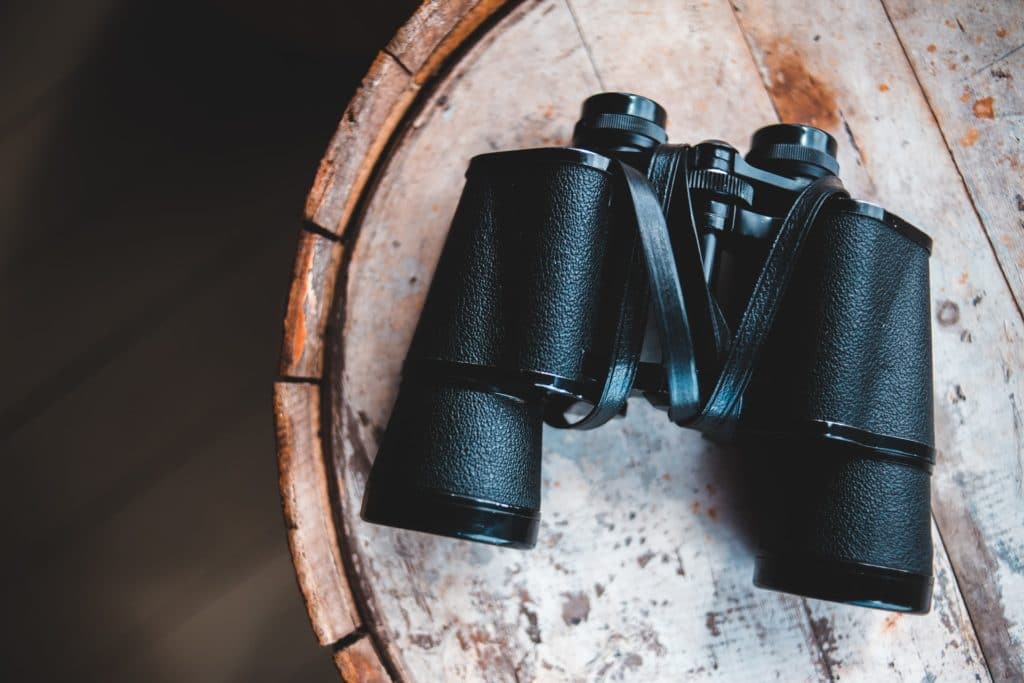
Top-of-the-line Binocular Brands
Armed with the above information on specific features, work your way through the below tiers of the best brands for binoculars.
These top-end brands manufacture high-performing binoculars, with the outdoor optical community regarding them highly.
Zeiss Binoculars
Zeiss is a well-reputed brand, producing binoculars for many years and offering many different optic products.
Its line-up currently consists of:
- Victory SF.
- Victory HT.
- Victory Pocket.
- Conquest HD.
- Terra ED/Pocket.
Looking at the top-of-the-line Zeiss Victory SF, Zeiss describes these binoculars as “the most versatile” and that they’re ideal for bird-watching. They come in 8 or 10 magnification, which is the ideal range for most users, and offer objective-size lenses of size 32 (mid-size) and 42 (full-size). In addition, the field of view is 486 feet (148m), and they have an exit pupil over 5mm.
Another luxurious product is the Zeiss Victory HT, which is “made for the twilight hours.” These binoculars have an impressive 54mm objective lens and either 8 or 10 magnification. With 6.75mm exit pupils, the 8×54 version is the best binoculars to use in dusk or dawn. Zeiss states that they have a 95 percent light transmission, which is extraordinarily high. Also, their field of view is 427 feet (130m).
These are the two best binoculars that Zeiss has to offer. Common features between the two are:
- Nitrogen-filled, making them fog-proof.
- Water-resistant up to 500mb for the Victory HT and 400mb for the ST.
- They’re also roof prism binoculars, providing a sleek and portable design.
As for value, these are a super high-performing pair of imagers that are among the best binoculars you can get on the market today. But, this also means that they’re very expensive.
Leica Binoculars
Leica is another high-end brand that has produced long-range optical instruments for over 170 years.
It’s a German company that started producing cameras but then expanded into binoculars.
Currently, its handmade binoculars line-up consists of these models:
- Noctivid.
- Trinovid.
- Geovid.
- Ultravid.
The highest-performing model is the Leica Noctivid. They’re available with either 8 or 10x magnification and are full-size with a 42mm objective lens. The 8×42 version has a 5.2mm exit pupil, making it good for viewing low-light environments, but the 10×42 version can zoom-in further and spot objects at a greater distance.
Their field of view is 405 feet (123m), and they’re roof prism binoculars, giving them a sleek design. Actually, the Noctivids are very portable, and you can even use them with one hand. They also have a 19mm eye relief, which is perfect for glasses wearers.
This pair of binoculars is also waterproof up to 5m and are nitrogen-filled, making them resistant to fog. They also come with eyepiece covers and a protective front lens cover to prevent any bumps or scratches.
Naturally, an almost perfect pair of binoculars isn’t cheap. But if you’re okay with buying more compact binoculars, Leica offers products such as Trinovid HD Compact that also perform super well.
High-End Binocular Brands
These come close to the very high-end products in terms of performance, but they tend to be slightly cheaper, as well as having a range of mid-price products as a complement to their more high-end models.
Nikon Binoculars
Most of us know Nikon as a camera brand, but did you know that it also produces a wide range of binoculars?
It offers products in all sizes, with prices ranging from approximately $70-$7,000, the upper limit being high-end binoculars. However, this American company sells really good mid-price range devices as well.
One example is the Nikon Monarch binoculars line, of which the Nikon Monarch HG is the most high-end model. It’s available in 8 or 10x magnification with a 42mm objective lens. Thus, it has either a 5.25 or a 4.2mm exit pupil.
The 8×42 has a 133m field of view, which is impressive for a pair of binoculars that’s cheaper than the competition. Conversely, the 10×42 has a 111m field of view, which is less, but remember that the 10x compared to the 8x gives a closer-up image.
Both alternatives of the Monarch HG have more than 17mm eye relief, so glasses wearers can use these without issue. They also have a sleek design since they’re roof prism binoculars, and they only weigh 665 and 680 grams, which is lighter than the pricier binoculars on our list.
In addition, the lenses have scratch-resistant coatings and are both waterproof and fog-proof. The Monarch HG uses ED (extra-low dispersion) glass, minimizing chromatic aberration. In simple terms, this means that it gives better color correcting and produces more clear and sharp images to your eyes. They’re more effective in doing this than cheaper compound lenses.
Steiner Binoculars
Steiner is a German brand that produces a wide variety of outdoor optics.
Compared to other brands on our list, Steiner specializes in binoculars and rifle scopes and doesn’t manufacture cameras and other devices. It advertises its products as belonging to one of the following categories:
- Hunting.
- Adventure.
- Marine.
- Tactical.
- Military.
One particular pair of binoculars with unique features is the Steiner Commander. These imagers categorize as marine binoculars, and they’re waterproof up to 33 feet submersion as well as fog-proof.
The Commander is also rubber-armored, making it non-slip and able to withstand 11 Gs of impact. This also makes it lightweight, even though it has large 50mm objective lenses.
As for the coolest feature, these binoculars have a built-in HD stabilized compass, giving a precise directional read. So, the Steiner Commander is a viewing and navigation tool combined into one, making it ideal for ship captains and marine patrol.
They also come with a floating neck strap that will keep your device afloat if bad luck strikes you and they end up in the water. This way, you’ll be able to retrieve it easier.
Customers report that they’ve used these imagers for more than 20 years and that they’re ultra long-lasting. They also have a wide field of view at 438 feet (134m), which is great for maritime use.
However, their magnification is only 7x, which is a little low. Also, it has a Porro prism system, making it a little bulky.
Vortex Binoculars
Vortex specializes in binoculars, riflescopes and other outdoor opticals. This relatively new Wisconsin-based company offers military-grade products and even has discounts for military and law enforcement officers.
It offers a mid-range to high-end line of products, but you get the most bang for your buck with the Vortex Diamondback Binoculars. They’re available with either 8, 10, 12, or 15x magnification and have objective lenses between 28-56mm. The model that really stands out is the 15×56, which has ultra-high zoom capabilities and a really large lens.
These features make the Diamondbacks ideal for use when sitting still, such as hunting or for search and rescue—observing small objects from a long distance. This could make the image shaky, but the binoculars come with a tripod adaptor for a more stable image when you attach the tripod.
Note that the downfall with the large objective lens is that it makes the binoculars less portable and not as lightweight as other binoculars. Also, it impacts the field of view negatively, and these imagers have a 230 feet (70m) field of view, which is rather narrow.
With that said, other great features are that they have O-ring seals to protect them from moisture, non-slip rubber armor and fog-proof functions. The eyecups are also adjustable for ultimate comfort.
Great-Value Binocular Brands
If you think the best binoculars are those that perform well at a great price, these are the brands you should go for.
Bushnell Binoculars
Bushnell is a Kansas-based company and a subsidiary of Vista Outdoor, producing different types of hunting gear, such as laser rangefinders and night vision products.
Its binoculars are specially made for hunters and bird watchers, producing them since the 1940s, making them a cornerstone of the Bushnell business.
If you’re a long-range hunter, the Bushnell PowerView Binoculars are great imagers. They’re available at an affordable price but statutes with high performance.
The 10x zoom is great for hunters that want to zoom-in on animals further away. Combined with the 50mm objective lens, they give bright and clear images from far. But the BK-7 optics drags down the crispness to some extent.
As for hunting in dusk or dawn, these are also a good fit with their 5mm exit pupil. What makes them even more ideal for hunting is their camouflage exterior that’s made from rubber and is also shock-absorbing. As for how much you can see at a 1,000-yard distance, their field of view is 341 feet (114m), which is pretty standard.
When it comes to portability, these aren’t very compact binoculars. They use a Porro prism system, making the imager bulkier.
Note that these aren’t waterproof binoculars either, and they can only handle a few splashes. They don’t provide a lot of eye relief, either.
Leupold Binoculars
Leupold started as a family-business manufacturing surveying equipment by hand in 1907. Later, it started producing rifle scopes, stating that it produced the first American fog-proof one. These days, they also make products for the tactical optics market.
As for binoculars, they offer an extensive line-up of middle-priced imagers, and they’re all made in China. Some users find that this impacts the quality of the binoculars negatively and that the material feels cheap, while others think that Leupold still produces solid imagers.
Even so, we think the Leupold BX-2 Alpine Binoculars are one of the best products Leupold has to offer. They come with an 8, 10 or 12x zoom and an objective lens size 42 or 52mm. The large lenses paired with extensive zoom make them a good choice for long-range hunters or search and rescue teams.
They’re also waterproof, fog-proof and even shock-proof. But note that these aren’t the best binoculars in terms of field of view at 326 feet (99 m).
Further specs are 16mm eye relief and adjustable eyecups, making them ideal for those who wear glasses. Furthermore, the 8×42, 8×52 and 10×52 models have an exit pupil larger than 5mm, and are thus good to use in low-light situations. The BX-2 Alpines also have a Twilight Light Max Management System that reportedly adds 20 minutes of extra light at dusk and dawn.
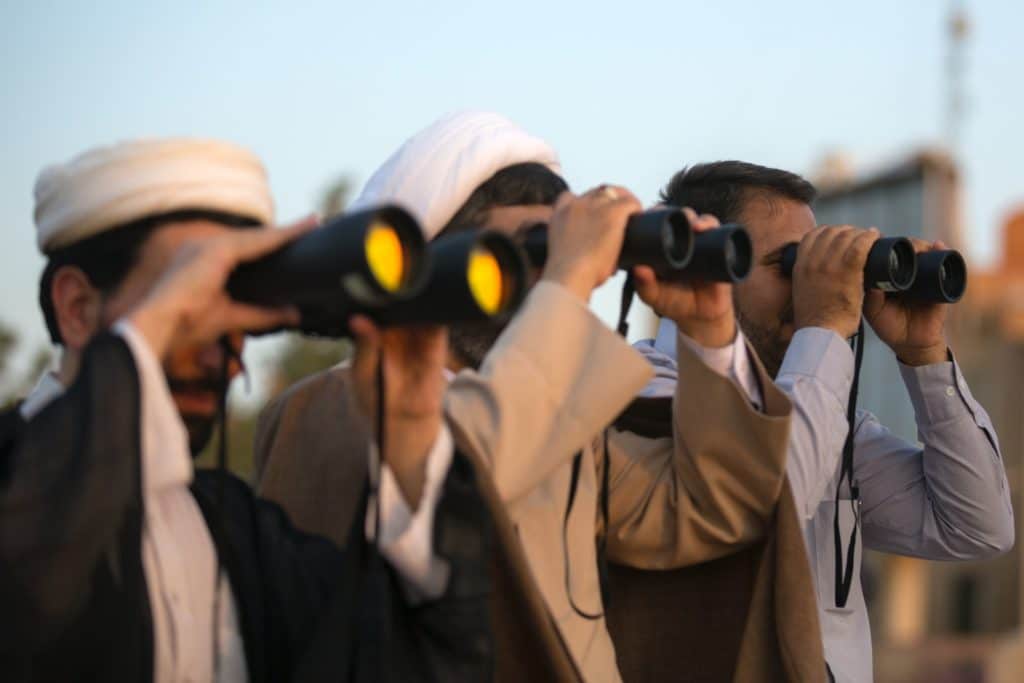
Budget-Friendly Binocular Brands
If you just want to try out some binoculars for fun or are on a very tight budget, these brands are the best binocular manufacturers for a thinner wallet.
Barska Binoculars
Barska is a worldwide sports optics company with its headquarters in California. It offers a variety of budget-friendly binoculars as well as some that are mid-range in price. Note that many of them aren’t produced in the US, which might impact their quality negatively.
The Barska Colorado Waterproof Binoculars is a popular model that’s very affordable and is great for kids and casual users. It’s waterproof and fog-proof and has a fixed 10x magnification. Just note that you can’t adjust the zoom.
These binoculars also have a 2.5mm exit pupil and are not ideal for low-light settings. Users even state that their image is rather dark. The BK-7 glass also adds to the less bright image. People who wear glasses will have a hard time using them as well since they only have 10.5mm eye relief. They also only have 25mm objective lenses.
With that said, the small objectives make these binoculars compact and portable. Furthermore, they have a 303 feet (101 m) field of view, which is very good for a pair of binoculars at this price.
BulbHead Binoculars
The “as seen on TV” products company, TeleBrands, is the founder of BulbHead. The idea was to build a brand identity focusing on “bright ideas,” offering many different gadgets for your home, kitchen and garden, among other things.
It only offers one binocular model, which is the affordable Atomic Beam Night Hero Binoculars. Its stand-out feature is the laser, which spots objects up to 150 yards away in complete darkness.
These use a green laser that works as a sort of flashlight, so they’re not “real” night vision binoculars, despite some customers believing this to be the case before purchasing. To describe it further, customers state that it lights up people’s faces to the extent that it’s too bright and can be harmful.
One pro with the Night Hero pair is that it has 10x magnification, which is great for most users. On top of this, they’re also waterproof.
Naturally, animals and birds get scared away by the glowing green light from these binoculars, and you shouldn’t use them for nighttime hunting. If you’re just a casual user or want a pair of toy binoculars, the Night Hero pair will do just fine. Otherwise, go for the Bushnell PowerView Binoculars or Leupold BX-2 Alpine Binoculars that perform better at a decent price.
Tasco Binoculars
Tasco manufactures rifle scopes, spotting scopes and telescopes alongside binoculars. It offers several cheap imagers mainly directed at hiking or bird watching, but also has a few lower mid-range binoculars in its line-up.
One of its most well-known and well-used products is the Tasco Essentials 7x35 Binoculars. The best thing with these binoculars is their impressive 470 feet (143m) field of view, allowing you to track moving objects from far away. This wide field of view is reason enough to go for these binoculars if you’re on a tight budget.
The Tasco Essentials 7×35 Binoculars are an option that won’t leave holes in your wallet and are a compact size with a 35mm objective lens. This makes it easy to carry around, but the image might not be so bright. It also has a 7x zoom, which is slightly below what you would look for in your typical binoculars.
Now, this pair could be sleeker in design still, but this isn’t the case, perhaps because it has bulkier Porro prisms. Also, the BK-7 glass prisms don’t give the brightest image. However, they have folded eye cups for better comfort, especially for those who wear glasses, and they’re waterproof.
Conclusion: Which Brand of Binoculars is the Best?
The answer really comes down to your personal preferences, area of use and budget. But, it’s hard to beat the super high-end Zeiss and Leica brands.
The ultimate winner producing the best binoculars is Zeiss in our eyes. Its Zeiss Victory SF has an unbeatable field of view combined with great-sized objective lenses and ideal magnification, while the Zeiss Victory HT are the best binoculars in terms of light transmission.
If you’re looking for a great pair of binoculars that are ultra high-performing but slightly cheaper, go for the Nikon Monarch HG with really clear and sharp images. For those who want good-value imagers, the Bushnell PowerView Binoculars work really well for hunters.
As for the cheaper brands, they’re best for casual users, and we don’t recommend them for hunters, law enforcement or similar.

